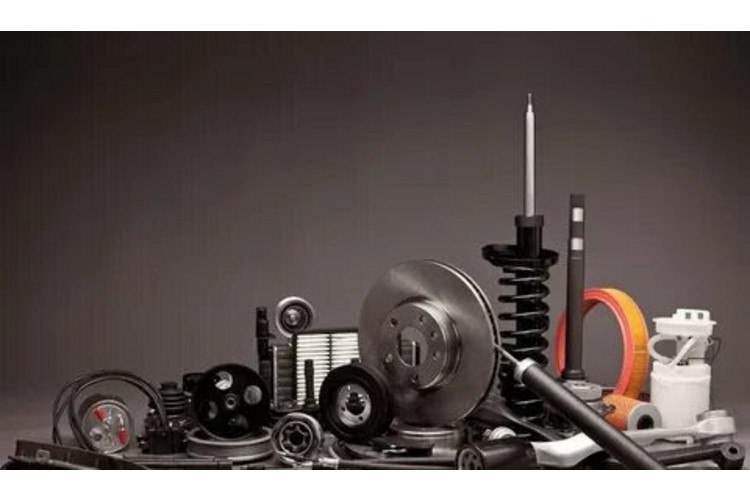In recent years, the Automotive Remanufactured Parts Market has witnessed significant momentum, emerging as a critical component of the global automotive aftermarket. As environmental concerns, economic pressures, and sustainability demands gain prominence, remanufactured parts are gaining widespread acceptance from manufacturers, suppliers, and consumers alike. The global automotive sector, driven by the need for cost-efficiency and waste reduction, is rapidly embracing the remanufacturing model—not just as an alternative, but as a mainstream solution.
Rising Vehicle Parc and Aging Fleet Accelerate Demand
One of the primary drivers of the Automotive Remanufactured Parts Market is the rapidly growing vehicle parc, particularly in emerging economies. Millions of vehicles are staying on the road longer due to improved build quality and consumer preference to delay new car purchases. As these vehicles age, the need for reliable and affordable replacement parts increases, pushing the demand for remanufactured components such as engines, transmissions, turbochargers, and starters.
Moreover, consumers in both developed and developing markets are becoming more price-conscious. Remanufactured parts offer a cost-effective solution without compromising on performance, making them an attractive choice for older vehicles that may not justify the investment in brand-new parts.
Growing Emphasis on Sustainability and Circular Economy
Sustainability has become a core focus across industries, and the automotive sector is no exception. Governments and regulatory bodies around the world are promoting circular economy principles, which emphasize repair, reuse, and recycling. Remanufacturing plays a pivotal role in this ecosystem by extending the life of automotive parts, conserving raw materials, and reducing landfill waste.
The Automotive Remanufactured Parts Market is thus directly aligned with environmental goals, offering substantial energy and material savings. For instance, remanufacturing an engine can save up to 80% of the energy and 70% of the raw materials needed to produce a new one. This sustainability benefit resonates well with both environmentally conscious consumers and automotive manufacturers aiming to lower their carbon footprint.
Technological Advancements Enhance Product Quality
A key factor transforming the perception of remanufactured parts is the advancement in remanufacturing technologies. Automation, robotics, precision machining, and advanced testing have all contributed to improved reliability and consistency in remanufactured components. These innovations are helping close the gap in quality between remanufactured and new parts.
Automakers and Tier 1 suppliers are increasingly investing in remanufacturing capabilities to ensure higher quality control and to maintain brand standards. As confidence in product durability increases, so does consumer trust—fueling further growth in the Automotive Remanufactured Parts Market.
OEM Participation and Warranty Support Boost Adoption
Original Equipment Manufacturers (OEMs) are no longer treating remanufacturing as an aftermarket afterthought. Instead, many are actively integrating remanufactured parts into their business models. Companies like Bosch, ZF, Valeo, and Caterpillar have extensive remanufacturing operations, offering products that meet or exceed OEM standards.
What’s further encouraging adoption is the warranty coverage that now accompanies many remanufactured parts. With warranties that rival or match those of new components, consumers and repair shops are more likely to opt for remanufactured alternatives—especially when cost savings are also involved.
Favorable Regulatory Environment and Policy Support
The global regulatory landscape is increasingly supportive of remanufacturing practices. In Europe, the End-of-Life Vehicles (ELV) directive encourages the reuse of vehicle parts. Meanwhile, in the U.S., the Environmental Protection Agency (EPA) has set guidelines that favor the use of remanufactured components to promote environmental sustainability.
Emerging economies are also adopting pro-remanufacturing policies. For example, India and China are both implementing standards and creating frameworks to formalize and regulate their remanufacturing sectors. This policy support is paving the way for a more structured and competitive global Automotive Remanufactured Parts Market.
E-Commerce and Digitalization Fuel Market Access
The digital revolution is playing a pivotal role in expanding the reach and accessibility of remanufactured automotive parts. Online platforms, B2B marketplaces, and e-commerce sites are helping consumers and businesses source remanufactured components with greater ease and transparency. Digital catalogs, real-time inventory updates, and virtual customer support are removing traditional barriers associated with finding the right remanufactured parts.
Additionally, advanced logistics networks and drop-shipping models have improved the speed and reliability of deliveries, making remanufactured parts available even in remote or underserved regions. As digitization continues to grow, it is expected to further boost market penetration.
Remanufacturing Gaining Ground in Electric and Hybrid Vehicles
While remanufacturing has traditionally been associated with internal combustion engine (ICE) vehicles, the transition to electric vehicles (EVs) is opening new avenues for market expansion. EV components such as electric motors, battery packs, and power electronics are now entering remanufacturing cycles.
This evolution is particularly promising, as EV parts are often expensive and resource-intensive to manufacture. Remanufacturing offers a sustainable and cost-effective solution, particularly as the first generation of electric vehicles begins to age. As per insights from Fairfield Market Research, companies that pivot toward remanufacturing EV-specific components are likely to gain a significant competitive edge in the coming years.
Regional Market Dynamics: Asia Pacific, Europe, and North America Lead the Way
Globally, several regions are at the forefront of the Automotive Remanufactured Parts Market. North America remains a dominant player due to its mature automotive aftermarket and strong OEM participation. Europe, driven by stringent environmental policies and a robust automotive ecosystem, is another leading market.
Asia Pacific, however, is emerging as the fastest-growing region, supported by a large aging vehicle fleet, rising disposable income, and expanding industrial capabilities. Countries such as China and India are investing heavily in organized remanufacturing frameworks, and are expected to become pivotal players in global market dynamics.
According to Fairfield Market Research, the Asia Pacific region holds considerable untapped potential due to its vast two-wheeler and commercial vehicle segments, making it an area of high interest for global remanufacturing leaders.
The Road Ahead Is Circular
The global boom in the Automotive Remanufactured Parts Market reflects a fundamental shift in how the automotive industry views product lifecycle, cost-efficiency, and sustainability. From technological enhancements and OEM engagement to policy support and consumer awareness, the momentum is strong—and growing stronger.
As automakers continue to embrace circular economy principles and as consumer demand for affordable, high-quality replacement parts increases, remanufactured components are poised to become an integral part of the automotive supply chain. Companies that innovate early and align with evolving market expectations will be best positioned to lead the way in this transformative era.












